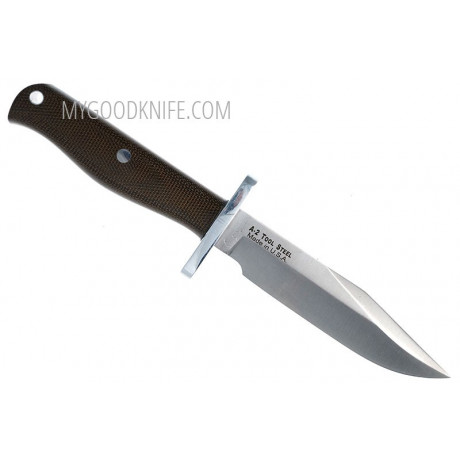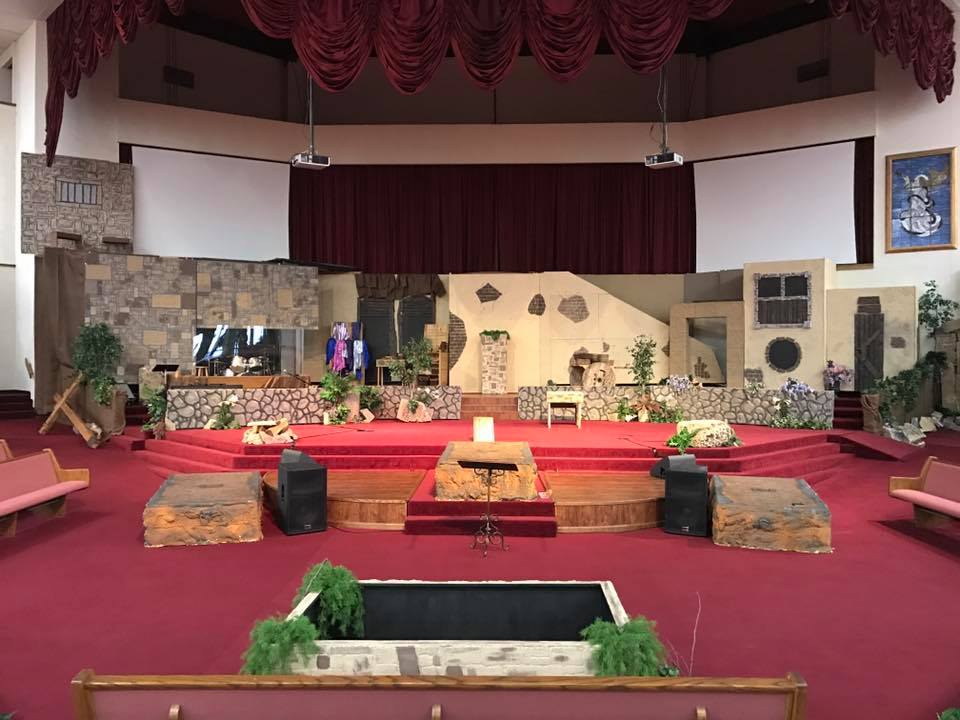- History Of Blackjack Knives Youtube
- History Of Blackjack Knives Near Me
- History Of Blackjack Knives Pictures
- History Of Blackjack Knives Chart
- History Of Blackjack Knives

History Of Blackjack Knives Youtube

History Of Blackjack Knives Near Me

History Of Blackjack Knives Pictures
by Anne Reeves
When the sole proprietorship “Chris Reeve Knives” began trading in January 1984, it was from the single garage attached to the house in which Chris was living. He worked by himself, making and selling various designs of knives, including the early models of the one-piece design, in the local South African market. Early in 1985, he received his first inquiry from the United States. Shortly thereafter, a shipment of one-piece knives was exported to Moteng International in Los Angeles.
Because of the promise of regular and substantial orders from Moteng, he moved into a home with a larger garage in July 1985 and hired a young assistant. All the time, Chris was working at improving production methods and increasing production capacity. In November of 1985, he received an inquiry from American Manor House in Baltimore, MD who, during the next 12 months, made significant purchases.
The business had the potential for growth and because the South African market was limited, the growth had to come from export. Chris decided the best way to approach the export market actively was to exhibit at a Custom Knife Show in the United States. He applied for and received, a table at the New York Custom Knife Show in November 1986. This show presented an opportunity for which Chris had been waiting a long time - to see how his work compared with the best in the world. It was very gratifying to see that his work was well on par; he made fairly good sales and met a vast number of new contacts.
Among the people he met was Mike Stewart who, together with a young South African, Steven Lewis, formed a company called Blackjack Knives early in 1987. Blackjack Knives took premises in Los Angeles and they planned to import and sell the Chris Reeve range of one-piece knives as well as develop their own range. Between April and November, Blackjack purchased a large number of one-piece knives and they did an excellent job of promoting the product. However, the company was poorly managed and almost went bankrupt at the end of 1987.
During a 1987 visit to the USA, Chris exhibited at the California Custom Knife Show in October and the New York Custom Knife Show in November. He was well received by the buying public and knifemakers alike. He applied for membership of the (USA) Knifemakers Guild, was granted probationary status in July 1988 and became a voting member in 1990.
The period between January 1988 and February 1989 was one of tremendous activity. Even though there had been an initial setback because of the collapse of Blackjack Knives, three USA companies began importing directly. Markets were opened in England, France, Italy, Australia, and Hong Kong. A staff of five - Chris, Anne (his wife who had been working full-time in the company since January 1987) and three full-time employees - produced approximately 1,600 units during this period.
While there were several advantages in exporting from South Africa (the exchange rate and the excellent Export Incentive Program offered by the South African Government) these were outweighed by the disadvantages. The continuing political strife resulted in a spiraling cost of living (and production), the worldwide threat of sanctions and trade embargoes and the general anti-South African feeling, made regular export very tenuous for a small business.
It seemed that the most sensible thing to do would be to move to the United States. Lengthy and careful consideration was given to the move and the choice of location. Boise, Idaho was chosen for several reasons, the most important of which was that the city is large enough to provide the services required for the business yet small enough to allow newcomers to find their feet. The beautiful countryside of Idaho offers the space for recreation activities like hiking, camping, and appreciation of the wilderness.
Chris and Anne arrived in Boise in early March 1989 and within six weeks had occupied workshop space and were producing finished knives. The first year or two in the USA was difficult. There was so much to learn - how to, where to and who to - were questions asked daily. Chris and Anne attended 12 knife shows all over the USA between July 1989 and April 1990 - an exhausting but beneficial way to make the presence of Chris Reeve Knives known. The companies previously importing the knives had frequently misrepresented the product and now many misconceptions were cleared.
But the overall pattern was growth. By 1991, Chris was able to cut down the number of shows to six large and/or prestigious shows a year; he employed an assistant; the range of one-piece knives grew to 21 different models; Chris was making selected high-dollar, purely custom knives as time permitted. Advertising in dedicated knife magazines produced a constant source of retail sales and a slow but steady building of a dealer base. Exports, particularly during 1992, were exceptional.
Every cent earned was reinvested in machinery. Continual attention was placed on refining the product, the methods of making the product and ensuring that the product was what the customer wanted. Because quality control and customer service are such important facets of the company, additional staff was employed.
In 1991, Chris introduced his folding knife, the Sebenza - Chris Reeve Small Sebena & Chris Reeve Large Sebenza. The success of this design has been phenomenal. As a result of an article in the Fall 1990 issue of Fighting Knives, 75 orders were received from retail customers - none of whom had ever actually held the knife. An initial 86 purely hand-made large Sebenzas were made and supplied during 1991. During this time, Chris was researching methods of making the knife more efficiently and in September 1991, purchased a $40,000 computer-controlled machining center. This was a major step forward and a steep learning curve lay ahead but it was now possible to increase the quality and the consistency of the components for the folder. A smaller size Sebenza was introduced in October 1992. Continual development goes into variations on the integral lock theme, including embellishment of the handle, inlays, and different blade materials.
In July 1993, Chris Reeve Knives, sole proprietorship, became Reeve Incorporated, trading as Chris Reeve Knives. The company brochure produced in April 1994 showed a refined line of one-piece knives. The reduced range better represented current market trends and allowed Chris Reeve Knives to continue to produce quality, affordable cutlery.
The period 1994 through mid-1996 was a time of consolidation, and then followed a time of great activity. A front cover article in Tactical Knives magazine in July 1996 of a new profile Sebenza virtually doubled backorders for the folding knives and greatly increased interest in the fixed blade knives. In November 1996, we moved into a new 4,000 sq. ft. facility and purchased two new machines to assist in the production of Sebenzas. In July 1997, the Umfaan, a smaller version of the Sebenza, was introduced and sales have been beyond expectation.
January 2000 saw the launch of the Classic Sebenza. In the time since Chris had introduced the new profile Sebenza in July 1996, many customers had requested the original profile knife, which was no longer available. As an acknowledgment of the turn of the millennium, we introduced the Classic MM (2000) in both large and small sizes. There were some minor differences from the original knife but the more angular profile was the same.
At the Blade Show and International Cutlery Fair in Atlanta, GA during June 2000, Chris Reeve Knives exhibited for the first time as a fully-fledged manufacturer. This allowed the company to enter a product in some of the different categories voted upon by other exhibiting manufacturers. The resulting industry awards are highly prized and so it was with great pride that we received the “Manufacturing Quality Award” for 2000. Building on this prestigious achievement, Chris Reeve Knives proudly received the award for the second time in 2001.
It had been several years since any brand new knife concept came from Chris Reeve Knives and so by the Shot Show 2001, the time was right for the introduction of the Chris Reeve Mnandi. This elegant, discreet pocket knife is perfect for a business person because it is very functional but looks entirely non-threatening. Orders before the actual availability of the Mnandi were exceptional and demand continues to be very high.
June 2002 saw a new phase in the history of Chris Reeve Knives. Working in collaboration with custom knifemaker Bill Harsey and Tactical & Survival Specialties, Inc., a company that provides logistical support for special operations teams, we submitted a fixed blade knife to U.S. Army Special Operations Command with the anticipation that it might be selected as the knife to be presented to all graduating Special Forces soldiers. The submission was successful and we are very privileged to make “The Yarborough”, a knife that is presented to every graduate of Special Forces Q Course. The Yarborough is also available to current and retired SF, and a civilian version, known as Chris Reeve Green Beret is available to the public at large. Response to this knife has been exceptional!
At the Blade Show in Atlanta, GA in June 2003, the Yarborough/Green Beret knife was judged “Knife Collaboration of the Year”. Chris Reeve Knives was also the proud recipient of the Manufacturing Quality Award – the only three-time winner of this award.
While we anticipate that world events will impact both our business and the knife industry in general, we look confidently to the future – where Chris Reeve Knives will show that exceptional design and quality craftsmanship are always desired.
History Of Blackjack Knives Chart

History Of Blackjack Knives
I’ve had several Blackjack knives, still have two. I’ve heard them called the poor man’s Randall, fairly accurate. The company seems to be perpetually on the verge of going out of business. I really liked the Trail Guide knife, but they’ve quit making it. The ones I still have are the model 125, nice design. Blackjack Knives are currently being produced by Knifeware, established in 1998 by Ken Warner, a member of the former Blackjack team that was located in St. These make an excellent hunting knife, with convex blades crafted from tough carbon tool steel and superb handles fit against aluminum fittings. Blackjack Knives Original Models Turn back the clock to 1987. Yep, we got 'em! Nobody on the web has these brand new in the boxes. Maximum cash out- know how much you can withdraw when History Of Blackjack Knives using this History Of Blackjack Knives casino bonus although the amount usually ranges from $50 with no upper limit. Size of bet- History Of Blackjack Knives a casino bonus will most likely restrict the amount you can wager, such as you should not exceed a. Blackjack Weapon History The sap and jack as we now know them began to take form in the 1800s. Just prior to the Civil War, President-elect Abraham Lincoln was escorted to the nation’s capitol by his friend and fellow lawyer Ward Hill Lamon, whose personal arsenal consisted of two pistols, a pair of brass knuckles, a large Bowie knife, and a.